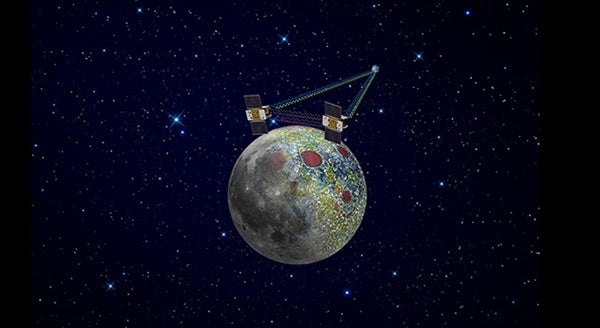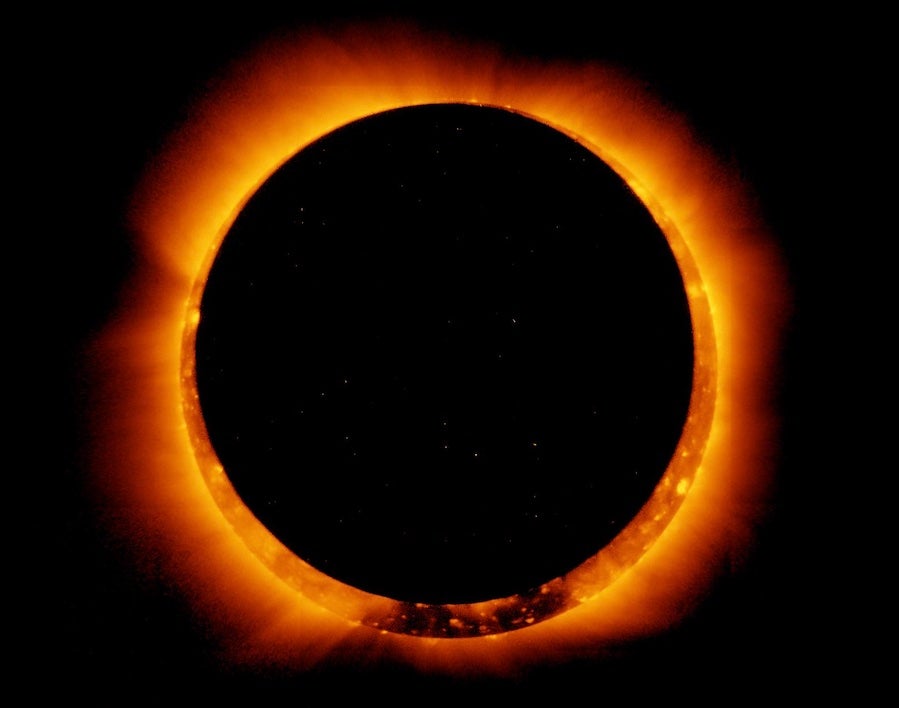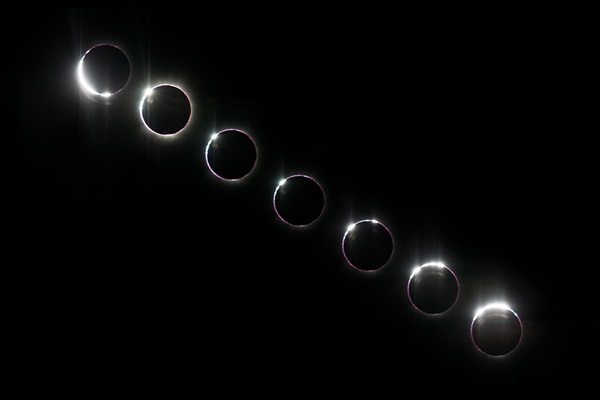“Since time immemorial, humanity has looked up and wondered what made the man in the Moon,” said Maria Zuber from the Massachusetts Institute of Technology in Cambridge. “We know the dark splotches are large lava-filled impact basins that were created by asteroid impacts about 4 billion years ago. GRAIL data indicate that both the nearside and the farside of the Moon were bombarded by similarly large impactors, but they reacted to them much differently.”
Understanding lunar impact basins has been hampered by the simple fact that there is a lack of consensus on their size. Most of the largest impact basins on the nearside of the Moon — the Moon’s face — have been filled with lava flows, which hide important clues about the shape of the land that could be used for determining their dimensions. The GRAIL mission measured the internal structure of the Moon in unprecedented detail for nine months in 2012. With the data, GRAIL scientists have redefined the sizes of massive impact basins on the Moon.
Maps of crustal thickness generated by GRAIL revealed more large impact basins on the nearside hemisphere of the Moon than on the farside. How could this be if both hemispheres were, as widely believed, on the receiving end of the same number of impacts?
Scientists have long known that temperatures on the nearside hemisphere of the Moon were higher than those on the far side: the abundances of the heat-producing elements uranium and thorium are higher on the nearside than the farside, and as a consequence, the vast majority of volcanic eruptions occurred on the Moon’s nearside hemisphere.
“Impact simulations indicate that impacts into a hot thin crust representative of the early Moon’s nearside hemisphere would have produced basins with as much as twice the diameter as similar impacts into cooler crust, which is indicative of early conditions on the Moon’s far-side hemisphere,” said Katarina Miljkovic of the Institut de Physique du Globe de Paris.
The new GRAIL research is also helping redefine the concept of the late heavy bombardment, a proposed spike in the rate of crater creation by impacts about 4 billion years ago. The time of the late heavy bombardment is based largely on the ages of large nearside impact basins that are either within or adjacent to the dark lava-filled basins, or lunar maria, named Oceanus Procellarum and Mare Imbrium. However, the special composition of the material on and below the surface of the nearside implies that the temperatures beneath this region were not representative of the Moon as a whole at the time of the late heavy bombardment. The difference in the temperature profiles would have caused scientists to overestimate the magnitude of the basin-forming impact bombardment. Work by GRAIL scientists supports the hypothesis that the size distribution of impact basins on the farside hemisphere of the Moon is a more accurate indicator of the impact history of the inner solar system than those on the nearside.










